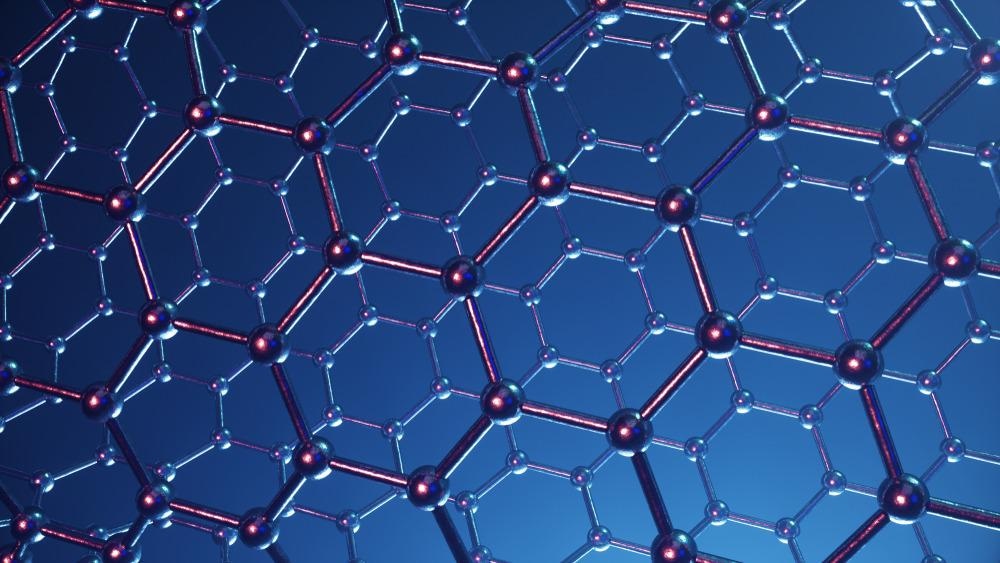A group of researchers showed the environmentally friendly synthesis of tannic acid-treated graphene as photothermal material using electrolytic exfoliation and consequent ultrasonic irradiation techniques in an article published in the journal Materials Letters.

Study: Eco-friendly synthesis of ferric ion-polyphenol-graphene aerogel for solar steam generation. Image Credit: Rost9/Shutterstock.com
Solar steam production for saltwater distillation and wastewater purification holds enormous potential for graphene-based photothermal materials.
However, producing effective graphene aerogel photon absorbers in a simple and environmentally friendly manner remains difficult.
The photothermal effect of the aerogel as-synthesized is excellent, and the solar-to-evaporation efficiency is high.
A more effective ferrous ion complex aerogel was designed to build a high-performance solar vapor production system by bonding with ferric ions.
Importance of Graphene-based Photothermal Materials
Solar steam production is seen as a viable approach for saltwater distillation and wastewater filtration to meet the growing issue of water scarcity.
At the water/air interface, thermal localization obtained by photothermal materials plays a vital role in enhancing the evaporation process.
Various effective photothermal materials, such as incident photons, carbonized materials, 2-D nanomaterials, and potential polymeric photothermal composites, have been documented thus far.
Because of their improved photocatalytic effectiveness, graphene-based photothermal materials have received much interest.
Limitations of Graphene-based Photothermal Materials
The production of graphene always includes using vivid acids and hazardous oxidants, which may pose a health risk and have an environmental impact.
As a result, a simple eco-friendly technology for synthesizing graphene-based photothermal materials for effective solar steam production is urgently needed.
Eco-friendly Method to Fabricate Graphene
The electrochemical exfoliating technique has gotten a lot of interest as a way to make graphene on a big scale and in a greenway.
The free of defect microstructure and good surface characteristics of exfoliated graphene is obtained by this method.
The hydrophobic nature of graphene, on the other hand, prevents water from being transported axially during photovoltaic steam production, implying a standard evaporation rate.
Thus, integrating high photothermal transformation and water transportation is very desired to establish a potential path resulting in defect-free graphene with adequate surface modification.
In this study, the researchers have described the environmentally friendly production of effective graphene-based photothermal materials for photovoltaic steam generation.
After electrochemical exfoliation, tannic acid (TA), an organic polyphenol, was used to aid exfoliation and accomplish graphene surface functionalization.
As a photothermal material, the resulting tannic acid synthesized graphene (TA-G) dispersion may be immediately converted to aero-gel.
In solar vapor generation, the TA-G suspension could intercalate with ferric ion to generate a ferric ion-polyphenol graphene compound, which had a greater evaporating rate and power conversion. Throughout, no harmful or costly chemicals were utilized by the researchers.
Preparation of Graphene-Based Assemblies
As the working electrode, reference electrode, and buffer solution, researchers used a 2 mm thick graphene sheet, a brass plate, and a 0.1 M sodium sulfate aqueous solution, respectively.
For 1 hour, a steady 10 V potential was set.
After being screened and washed, the exfoliated graphite granules were sonicated for 10 minutes in a 1.2 weight percent tannic acid aqueous solution.
The nano-flakes were purified and retrieved as graphene treated with tannic acid (TA-G). After that, the TA-G emulsion was combined with a surplus of ferrous chloride solution to make ferric tannate synthesized graphene structures.
Research Findings and Conclusion
The construction of an effective component for solar vapor production in an environmentally acceptable manner is described in this paper.
The as-synthesized device had an evaporation rate of 1.2 kg m-2 h-1, a water/vapor contact temperature of 35 oC, and power efficiency of ~87 percent under 1kW/m2 lighting.
According to the researchers, the free of defect microstructure of exfoliated graphene and the active hydrophilic ferric ion-polyphenol complex was responsible for the excellent solar vapor production capability.
Because their technique was simple and environmentally friendly, this method to produce efficient photothermal materials has a lot of promise in terms of expense real-world use, as well as durability and emission reduction.
Continue reading: 9 How Microbes are Making Nanotechnology More Eco-Friendly
Reference
Xiameng Feng. et al. (2022). Eco-friendly Synthesis of Ferric Ion-Polyphenol-Graphene Aerogel for Solar Steam Generation. Materials Letters: Proceedings. Available at: https://www.sciencedirect.com/science/article/abs/pii/S0167577X2200091X
Disclaimer: The views expressed here are those of the author expressed in their private capacity and do not necessarily represent the views of AZoM.com Limited T/A AZoNetwork the owner and operator of this website. This disclaimer forms part of the Terms and conditions of use of this website.